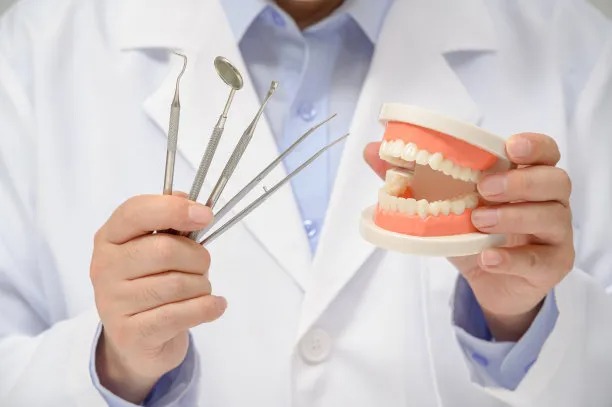The Importance of Proper Techniques When Extracting a Tooth for Optimal Dental Health Outcomes
Summary: Tooth extraction is a significant dental procedure that necessitates meticulous approach and technique to ensure optimal health outcomes. This article delves into the importance of proper techniques in tooth extraction, emphasizing aspects such as pain management, infection control, preservation of the surrounding tissues, and post-extraction care. By following established protocols, dental professionals can significantly improve recovery time and ensure patients maintain better dental health post-procedure. Contrarily, improper techniques may lead to complications, chronic pain, and long-term health issues, underscoring the need for trained professionals to perform these operations. This discourse aims to highlight the critical aspects of tooth extraction, reinforcing its profound impact on overall dental health.
1. Pain Management During Tooth Extraction

Pain management is an essential component of any surgical procedure, including tooth extraction. Proper techniques should be employed to minimize discomfort and anxiety for the patient. Local anesthesia is commonly used to numb the area around the extraction site, ensuring the patient feels no pain during the procedure. Additionally, sedation may be an option for anxious patients, creating a more comfortable experience.
The administration of anesthesia requires proper technique to avoid complications. If the local anesthetic is not administered accurately, the patient may experience inadequate numbing, leading to discomfort during the extraction. Dentists must carefully assess the patients medical history and tailor their pain management approach to meet individual needs effectively.
Post-operative pain management is equally crucial. Dentists should provide patients with comprehensive instructions on pain relief methods and prescribe appropriate medication to manage post-extraction discomfort. Adequate pain management facilitates a smoother recovery process and enhances patient satisfaction with the overall dental experience.
2. Infection Control in Tooth Extraction
Infection control is a paramount consideration during tooth extraction procedures. The mouth is a breeding ground for various bacteria, and improper extraction techniques can introduce these pathogens into the bloodstream or surrounding tissues. Dentists should follow strict sterilization protocols to minimize the risk of infection before, during, and after the procedure.
Utilizing sterile instruments and wearing appropriate gloves, masks, and gowns are basic strategies to reduce infection risk. Additionally, a clean and controlled environment during the procedure is essential for optimal outcomes. Dentists must ensure that all surfaces and tools used in the extraction are disinfected properly.
Post-operative care also plays a vital role in preventing infections. Dentists should instruct patients on maintaining proper oral hygiene and potentially recommend antibiotics if necessary. Monitoring the extraction site for signs of infection, such as increased swelling or discharge, is crucial for ensuring patient safety and health.
3. Preservation of Surrounding Tissues
The preservation of surrounding tissues during a tooth extraction is crucial for ensuring optimal healing and maintaining oral functionality. Proper techniques help minimize damage to adjacent teeth and tissues, supporting a more successful recovery. Careful planning and execution are necessary to avoid compromising the integrity of the surrounding anatomy.
For instance, tooth extraction involving molars requires detailed attention to avoid damaging adjacent teeth or underlying structures such as nerves and blood vessels. Dentists must utilize imaging techniques, such as X-rays, to assess the positioning of the tooth and plan the extraction accordingly.
By employing gentle and precise techniques, dental professionals aim to preserve as much dental tissue as possible. This preservation is essential for future restorative options, such as implants or bridges, and facilitates better overall dental and oral health outcomes for the patient.
4. Importance of Post-Extraction Care
Effective post-extraction care significantly impacts a patients recovery time and overall health. Patients must receive clear instructions to manage their recovery adequately. From dietary recommendations to activity restrictions, these guidelines help minimize complications and support swift healing.
After surgery, patients are often advised to avoid using straws or performing strenuous activities for a few days. Such actions can disturb the blood clot necessary for healing, leading to dry socket—a painful condition that can hinder recovery. By understanding and adhering to these guidelines, patients can play an active role in their recovery.
Furthermore, effective follow-up appointments are vital to monitor the healing process and address any complications early on. Dentists can assess the extraction site, ensuring proper healing and providing additional support if needed. This ongoing care establishes a framework for optimal dental health outcomes in the long term.
Summary:
The discussion surrounding proper techniques in tooth extraction emphasizes the influence on dental health outcomes. Pain management, infection control, preservation of surrounding tissues, and post-extraction care are all critical components that contribute to a successful extraction process. Adequate training and adherence to established protocols ensure that dental professionals can deliver the best possible care, significantly impacting patient recovery and satisfaction.
This article is compiled by Vickong Dental and the content is for reference only.



